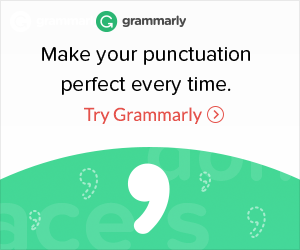In today’s digital age, writers no longer need traditional publishing houses to produce physical copies of their work.
Thanks to the rise of print-on-demand (POD) services and platforms, independent authors can easily create and distribute high-quality printed materials like books, journals, and merchandise without investing in large print runs or upfront costs.
In this article, we’ll explore the world of print-on-demand for writers and the many possibilities it presents for their e-commerce business. Whether you’re an experienced novelist or just starting your writing career, POD can provide cost-efficiency, flexibility, and creative freedom to make your writing vision a reality.
What Is Print-On-Demand?
Print-on-demand (POD) is a digital printing technology that allows for the printing and distribution of small print runs on demand without costly equipment or large warehouses. With POD, a book or journal is only printed and delivered when ordered, eliminating the need for authors or publishers to invest in large print runs or hold large quantities of inventory.
Check these out:
- 30 Days of Gratitude: A Journaling Challenge; $12.99
- Creative Writing Prompt Journal: Daily Guided Workbook; $15.00
- No Worries: A Guided Journal to Help You Calm Anxiety, Relieve Stress, and Practice Positive Thinking Each Day; $15.35
Why Print-On-Demand Is A Boon For Writers
One of the major benefits of POD is the elimination of upfront inventory costs. With traditional publishing methods, writers would need to invest a significant amount of money upfront to print many copies they may not be able to sell immediately, especially now that they can leverage platforms like Skup. With POD, books and journals are printed only when there is demand, significantly reducing the financial risk for writers. This allows authors to focus on creating quality content without worrying about upfront costs.
Another advantage of POD is that it enables writers to explore niche and specialized topics. Traditional publishing often revolves around mainstream genres and popular topics to ensure market viability. However, with POD, writers can delve into niche subjects and cater to specific audiences. This opens up new opportunities for writers to tap into untapped markets and share their expertise with a dedicated readership.
Furthermore, POD offers the convenience of easy updates and revisions. In the traditional publishing model, changing a book or journal after printing involves costly reprints or the accumulation of outdated stock. With POD, writers can make updates and revisions effortlessly, ensuring their content is always up-to-date and relevant. This flexibility allows writers to respond to feedback, incorporate new information, or refine their work without hassle.
In addition to financial and logistical advantages, POD also brings environmental benefits. Traditional publishing often leads to significant waste due to unsold stock. Print-on-demand models directly address this issue by only producing copies when ordered. This reduces waste, minimizes the environmental impact, and contributes to a more sustainable publishing industry.
Lastly, the global reach and scalability of print-on-demand cannot be overlooked. Through POD platforms and services, writers can easily reach a worldwide audience without complex distribution networks. Writers can make their work available to readers globally, regardless of geographical barriers. Additionally, as demand for their books or journals grows, writers can scale up their production quickly and efficiently, ensuring they can meet the needs of their expanding readership.
Exploring Various Print-On-Demand Products For Writers
1. Journals
Journals are a popular print-on-demand product for writers as they offer a range of possibilities to enhance the writing experience:
- Custom-designed covers: Print-on-demand platforms allow writers to create personalized covers that reflect their unique style and brand. This feature especially benefits writers who want to establish a consistent visual identity.
- Incorporating prompts and specific themes: Writers can add prompts, inspirational quotes, or themes to their journals to guide and inspire their readers. This adds value to the journal and creates a more engaging experience for the user.
- Possibility of interactive elements: Print-on-demand technology opens up new possibilities for interactive journals. Writers can include QR codes that link to online resources, such as additional writing exercises or tutorials. This adds an extra layer of interactivity and value to the journal, enhancing the overall user experience.
2. Novels and short story collections
Print-on-demand offers writers the opportunity to bring their novels and short story collections to life by considering the following:
- Designing compelling covers: A well-designed cover is crucial in attracting readers’ attention. Writers can work with professional designers or create eye-catching covers that reflect the genre and tone of the content within.
- Formatting tips for the best reader experience: Writers can ensure a seamless reading experience by paying attention to formatting details such as font choice, spacing, and chapter breaks. This helps readers engage with the story without distractions.
- Including bonus content: To add value to readers, writers can consider including bonus content, such as author interviews, behind-the-scenes information, or interactive elements like augmented reality features. These extras create a more immersive experience for readers and increase the perceived value of the printed book.
3. Poetry collections
Print-on-demand allows poets to showcase their work in unique and visually appealing ways:
- Unique formatting and typography: Poetry collections often rely on visual aesthetics to enhance the emotional impact of the poems. Writers can experiment with unique formatting and typography choices to create visually stunning printed poems.
- Incorporating illustrations or art: Writers can collaborate with artists or include their artwork to complement the poems. They can also use AI design tools like Kittl to generate stunning artwork. This visual element adds another layer of artistic expression and elevates the overall presentation of the collection.
- Crafting themed collections: Writers can create themed poetry collections around specific topics or emotions. This allows them to curate and present their poems cohesive and meaningfully, appealing to readers who resonate with those themes.
4. Workbooks and planners
Print-on-demand provides writers with the opportunity to create personalized workbooks and planners:
- Personalized templates and structures: Writers can design templates and structures that cater to specific writing goals or activities. Whether it’s a writing planner, a goal planner, or a specialized activity workbook, customizing these tools enhances the user’s experience and helps them stay organized and focused.
- Including resources, trackers, or reference sections: Workbooks and planners can include additional resources, trackers for writing progress, and reference sections with tips and techniques to assist writers in their creative process. These elements provide practical value to users and support their writing journey.
- Themes: Writers can create workbooks and planners with specific themes, such as character development, plot structure, or specialized writing exercises for specific genres. By catering to niche subjects, writers can attract a dedicated audience seeking specialized guidance.
5. Art and illustration books
For writers who want to incorporate artwork or collaborate with artists, print-on-demand offers exciting possibilities:
- Collaborating with artists or using personal art: Writers can collaborate with artists to create art and illustration books that combine written content with visual elements. Alternatively, writers with artistic skills can use their art to complement their work. This collaboration adds visual interest and expands the artistic horizon of the printed book.
- Importance of high-quality printing and paper choice: Art and illustration books rely heavily on visual presentation. Choosing high-quality printing options and paper showcasing the artwork’s vividness and detail is essential. By ensuring a premium printing experience, writers can elevate their art and illustration books to the next level.
- Monographs, graphic novels, and other possibilities: Print-on-demand technology enables writers to explore various formats beyond traditional books. From monographs that showcase a single artist or subject to graphic novels that tell stories through sequential art, the possibilities for art and illustration books are endless.
6. Educational materials
Print-on-demand can be a valuable tool for writers creating educational content:
- Producing guidebooks, textbooks, or tutorial content: Writers can use print-on-demand to publish educational materials such as guidebooks, textbooks, or tutorial content. This allows them to share their knowledge and expertise with students, professionals, or enthusiasts.
- Interactive features like quizzes or exercises: To enhance the learning experience, writers can incorporate interactive features like quizzes, exercises, or hands-on activities. These elements engage readers and reinforce the principles and concepts being taught.
- Catering to niche subjects: Print-on-demand allows writers to cater to niche subjects that traditional publishing houses may not cover. By focusing on specialized topics or underserved markets, writers can connect with a targeted audience eager to learn and grow in those areas.
Take Advantage of Print-On-Demand
Print-on-demand provides writers with a powerful tool to bring their vision to life and connect with readers uniquely and meaningfully. From journals that reflect their branding and personality to novels and poetry collections that showcase their writing talent, writers can leverage the benefits of print-on-demand to produce high-quality books that appeal to niche markets and genres.
As the democratization of publishing continues to disrupt the traditional publishing industry, print-on-demand offers writers a viable alternative to reach wider audiences and establish their brand. By embracing the potential of print-on-demand, writers can take their writing career to new heights and contribute to the future of the writing industry.




Leave a Reply